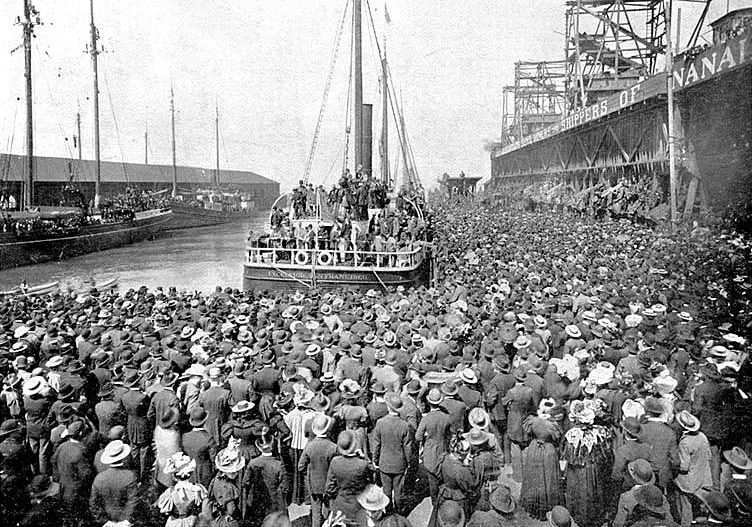WW I Conscription Begins, 1917
 |
| Young men registering for the draft in 1917/ |
It wasn't the first instance of conscription in America, of course. Back in colonial times, able-bodied men were required to enroll in local militias, and to undergo training and be ready to serve. During the Revolutionary War, each state had a quota of military men that they were required to provide, and the states drafted when necessary. The central government itself had no power to conscript.
 |
| A WWI draft card |
In fact, this was the main problem with the draft during the Civil War. If drafted, you could get out of it by providing a substitute. Families could decide which of the men would go to war and which would stay home. Others simply paid someone to go in their stead
.
The 1917 Selective Service Act aimed to eliminate some of the Civil War era abuses but of course it didn't succeed perfectly. Since draft boards were local, the poorer classes were generally less likely to be exempted. African-Americans in particular tended to be over-represented, although they were less likely to be sent into combat situations. The proportion of draftees was also higher among immigrants.
The Act did allow for conscientious objector status, but it was limited to the Amish, Quakers, and Church of the Brethren. Out of the 64,700 men of other faiths who claimed CO status, 57,000 were certified able to serve by the draft boards, 30,000 passed the medical requirements, and 21,000 were inducted. Out of the 21,000, about 80% agreed to serve. There were only 3989 draftees who refused to serve, and most of these were of other pacifist denominations.
Death of George Carmack, Man Who Started the Klondike Gold Rush, 1922
 |
| The Excelsior was the first steamship carrying prospectors to the Klondike. It could only carry about 350 passengers. |
 |
| Kate Carmack |
When George Carmack returned to civilization in 1898, he was worth over a million dollars. He left the US and moved to Vancouver, marrying the daughter of a successful miner. We don't know what happened to Kate -- he may have simply abandoned her.
William Boyd, "Hopalong Cassidy", Born, 1895
He wore a black hat, but we all knew he was a good guy.William Boyd had a life -- and a career -- long before he became known as Hopalong Cassidy, of course. In his early life he worked as an orange picker, an auto salesman, and a surveyor. He also got a little work as an extra in movies. A little changed to a lot, and pretty soon he was a leading star of silent movies, and making over $100,000 a year.
All that came to an end in 1931, when another William Boyd got arrested on gambling and liquor charges. The newspapers ran the wrong photo, and Radio Pictures fired him. In spite of his remarkable salary over the past few years, Boyd was broke -- he had expensive tastes.
In 1935, he was offered a supporting role in the movie Hop-Along Cassidy. Boyd asked for the starring role and he got it. The movie was based on a pulp fiction novel by Clarence E. Mulford, one of a series of six novels. In the books, Hop-Along was a hard-drinking, hard-living man, but the character got changed for the movie. Boyd's Hop-Along was completely wholesome.
By 1947 there were 66 Hop-Along films, and somewhere along the line the spelling of the character's name was changed to Hopalong. Boyd make the spectacularly wise move of buying all the rights to Hopalong -- all the movies, books, and the character itself -- in 1947.
In 1949 he released the films to television. The first broadcasts were so successful that the network didn't wait for new shows to be produced -- they just edited the films down to broadcast length. Hopalong Cassidy was the first TV western series, and there would be more to follow.
Boyd became very wealthy as a result of his most famous character. Besides the TV shows, there were comic books, trading cards, lunch boxes, cowboy outfits, cups, dishes, and a ton of other licensed merchandise. Boyd made tours and appearances dressed as Hopalong for years. He refused to license merchandise that he thought was unsuitable for his fans, and he wouldn't make personal appearances if the children would be charged.
In later years, Boyd refused requests for personal appearances, since he thought it would be too confusing for his little friends to see him as an old man, even if they were middle-aged themselves. He died from complications from Parkinson's disease and heart failure in 1972.

No comments:
Post a Comment